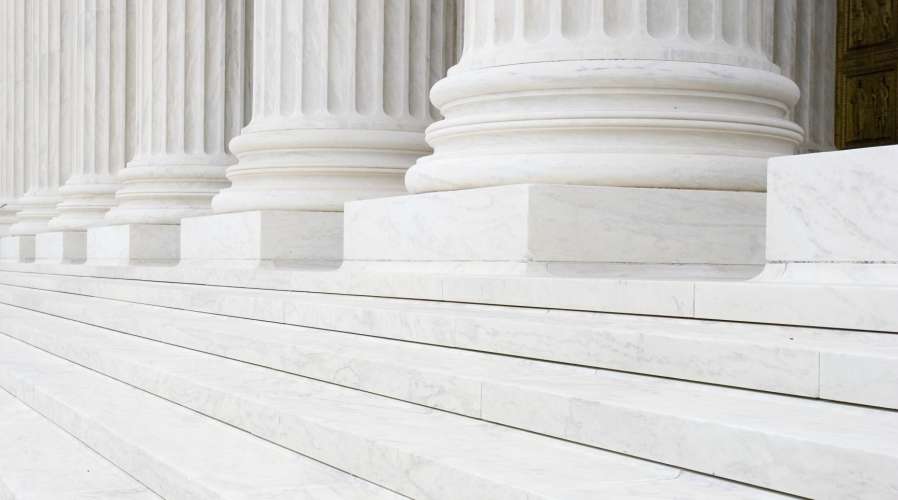Introduction
It's trite but it's true: 2023 was a busy year.
Data from the courts [1] confirms it with the number of issued claims (across all courts) on the up, driven at least in part by more money claims. In the Chancery Division specifically, claims have risen from 5,296 issued in 2019, to more than 14,000 in 2023 [2] (of which more than 11,000 were in the Company and Insolvency List). Of all those claims, however, more were undefended (there were at least 16% fewer defended claims than before COVID) and there were more default judgments than in previous years. But the courts remained sufficiently busy that, across all courts, it took an average of more than 70 weeks for claims on the multi or fast track to reach trial [3]; at least 17 weeks longer than in 2019.
The subject matter of the increased court action reflected a year of high inflation, paired with the aftermath of Brexit and the Ukraine war; with plenty of construction disputes and HMRC claims. The year also saw a steady increase in claims involving parties in the technology, media and telecoms sector – rising from 814 claims in 2020, to more than 1,300 in 2023. There were also some landmark IP, environmental and arbitration-related cases (with many more to watch). And with those growing litigation numbers, it is perhaps no surprise that 2023 was also the year when focus turned more so than ever to ADR – and in particular, mediation – and the use and potential use of AI.
In this article, we set out some of the key developments in these and other areas this year.
Mediation
A round-up of the year's disputes activity really cannot ignore the Court of Appeal's decision in Churchill v Merthyr Tydfil Borough Council. This case is likely to have far-reaching consequences for litigators, such that it involved interveners including The Law Society, the Bar Council, CEDR and the Civil Mediation Council. The Court's judgment was as impactful as expected, with the right of a party to not have to mediate, which was enshrined in previous case law, being displaced. The English courts can now lawfully pause litigation for, and/or order, non-court based dispute resolution processes.
The Court in Churchill was careful to recognise that in some circumstances, pausing for mediation or other ADR might impair the claimant's right to a hearing or, in all the circumstances, not be proportionate to the overall objective of resolving the dispute fairly, quickly and at reasonable cost. So mediation will not always be mandatory. However, when combined with some of the other recent moves towards mediation, the decision indicates that, absent exceptional circumstances, parties will be expected to consider mediation as part of their litigation strategy.
Mediation is also being promoted or mandated in other settings:
- the UK government has confirmed its intention to fully integrate mediation into the court process for small civil claims and employment tribunals, with all parties in cases valued below £10,000 to attend a free mediation appointment or face costs penalties and/or strike out;
- the Civil Justice Council is recommending incorporating mediation into a new general Pre-Action Protocol, and making those protocols mandatory unless specific exclusions apply; and
- in the EU Intellectual Property Office, a free of charge mediation centre has been launched, to support SMEs in mediating their first instance EU IPO opposition and invalidation actions.
With all that in mind, and especially with 2023 being somewhat of a bumper year for litigation, it feels plausible that 2024 might be the year of mediation. But what of other dispute resolution processes, such as arbitration?
Arbitration
The statistics show that London continues to be an attractive place to arbitrate disputes. There has, however, been much discussion this year about how to ensure that London retains its pre-eminent status.
In May, the LCIA reported an upward trajectory of LCIA arbitrations in the final quarter of 2022 that continued into the first quarter of 2023. Nevertheless, the total number of cases for 2022 (the last full year for which data is available) was down on the previous two years. Meanwhile, the data available for arbitration-related court judgments in 2023 suggests broadly consistent figures with recent years [4], notwithstanding that in March the Commercial Court reported a "very significant increase" in arbitration-related applications for 2021/22.
A notable development this year has been the progress that has been made towards reform of the Arbitration Act 1996 to ensure it remains fit for purpose. In September, the Law Commission published a final report on the Act following extensive consultation. The key message was that root and branch reform is not needed or wanted, but that the law can be improved in a number of discrete areas. In particular, the report recommended (amongst others):
- an amendment to the Act to provide that the governing law of an arbitration agreement is the law of the seat, unless the parties express otherwise (changing the established rule in Enka v Chubb);
- an amendment to the Act to introduce an express statutory power for arbitrators to determine an issue on a summary basis; and
- new court rules to restrict the hearing/re-hearing of evidence and the presentation of new arguments where there is a court challenge to an arbitral award on the basis of substantive jurisdiction (s.67).
The Arbitration Bill is making swift progress through Parliament and is expected to come into force in the middle of 2024.
The past 12 months has also seen a number of noteworthy arbitration-related English courts judgments, on topics including anti-suit injunctions to support foreign-seated arbitrations, the enforcement of arbitration awards in the consumer setting and the suitability of the arbitral process in cases of fraud involving a state.
In a series of cases [5], the English courts have been asked to restrain proceedings in Russia in favour of arbitration, notwithstanding that the arbitration agreement provided for a Paris, not a London, seat. This has led to a number of decisions with a mixture of outcomes, including a decision from the Court of Appeal and a further appeal in process (as at the date of this article). The judgments show that the English courts will grant an anti-suit injunction (and potentially anti-enforcement and anti-anti-suit injunctions) even where the arbitration is seated outside of England, if there is a connection with England and the court believes that such an injunction is appropriate. However, much turns on the facts and the approach of the judge assigned to the case; in these cases, the respective judges took different views on whether French law recognises foreign anti-suit injunctions and whether an anti-suit injunction is necessary where damages may be available in arbitration.
In the consumer setting, 2023 saw two important cases following 2022's Court of Appeal decision in Soleymani v Nifty Gateway. In Payward v Chechetkin, a case involving a cryptocurrency exchange with terms governed by Californian law and providing for arbitration in San Francisco, the English court declined to enforce the arbitral award for being contrary to public policy. The arbitrator had failed to consider the Consumer Rights Act 2015, and in any event the arbitration clause would be an unfair term for being disadvantageous to the consumer. In Eternity Sky Investments v Mrs Zhang, however, there was an opposite result. The court found that a guarantor was a consumer within the meaning of the Consumer Rights Act, but there was no close connection between the contract and the UK, so the Consumer Rights Act did not apply. In any event, the choice of HKIAC arbitration did not cause injustice to the guarantor. Against this background, we expect 2024 to bring further developments in the context of consumer disputes that are being arbitrated.
Finally, one case has led to wide-ranging debate over the suitability of the arbitration process to decide high-value cases involving fraud of public officials. In a challenge to arbitral awards on the grounds of serious irregularity (s.68) in Nigeria v P&ID, the court found that the awards were obtained by fraud, contrary to English public policy. It was determined that the investor in this case bribed a Nigerian public official at the time of formation of the contract, continued to bribe the official during the arbitral proceedings and obtained/retained privileged materials. Reflecting on the case, the judge, Mr Justice Knowles, commented that the "arbitration was a shell that got nowhere near the truth", and that having an experienced tribunal was not enough. He challenged arbitral practitioners to reflect on how to make the arbitral process more suitable in cases where a state is involved and the sums are large, questioning whether the tribunal in this case should have been more interventionist.
Third party litigation funding
The litigation funding market has for some years been in a state of expansion and growth, as England & Wales has moved away from its historic prohibition of the funding of litigation by a third party. However, litigation funders suffered a set-back this year when the Supreme Court handed down the PACCAR judgment, in what some said might be the beginning of the end for third party litigation funding in England & Wales.
In that case, it was held that the services provided under the funding agreements in issue fell within the remit of 'claims management services', making those agreements Damages Based Agreements (DBAs), such that they needed to meet certain requirements to be enforceable. The Supreme Court noted that the implications of the issue in the appeal were "significant". This was because if it was to be held that these agreements were DBAs, the Court had been told that "most third party litigation funding agreements would…be unenforceable as the law currently stands". That is because many such arrangements do provide for a return by reference to a percentage of the damages ultimately recovered (which is the remit of DBAs) but have not been prepared to comply with the DBA requirements.
However, some months on, the initial view of some that the judgment may be an existential threat to litigation funding in England & Wales has subsided, as existing funding agreements have (on the whole) been amended and new agreements have been structured (largely) to avoid the DBA restrictions. The increased optimism has been fuelled by a number of pro-enforcement post-PACCAR developments.
In Therium Litigation Funding v Bugsby Property, the Commercial Court had to decide whether an agreement that was impacted by the decision in PACCAR could be relied upon by Therium (in part) in its application for an injunction to preserve funds it claimed were payable to it following the settlement of a dispute by Bugsby. The parties agreed that the part of the agreement providing for Therium to recover a percentage of Bugsby's settlement sum was no longer enforceable post-PACCAR. But Therium sought to rely on the remainder of the agreement, which provided for recovery of the funding amount and a multiple of the funding commitment. While the enforceability of the agreement will ultimately be decided in a private arbitration, the High Court's judgment did find that there was a serious issue to be tried as to whether the only aspect of the agreement that is invalid is the term relating to a percentage-based recovery, with that term potentially being severable.
In another recent decision, the Sony Interactive case, some of the proactive, future-proofing thinking of funders was highlighted. In that case, before the Competition Appeal Tribunal (the CAT), the funding agreement was amended post-PACCAR specifically to limit the recovery to a multiple of the funding, not damages, unless or until such a damages basis were to be enforceable and permitted by applicable law. The CAT found the agreement was not a DBA and thus enforceable, because the damages-based return would not have any legal effect unless the contingency were to occur (i.e. a legislative change reversing the outcome of PACCAR).
There are also indications that the Government may get involved and legislate in a way that allows funding agreements that provide for a percentage-based return to continue to be enforceable. In November, the Government tabled an amendment to an existing Bill to allow for percentage based funding agreements for opt-out proceedings before the CAT. While this amendment – if enacted – will be welcome to funders with cases in the CAT (given DBAs are not permitted in such proceedings), there continues to be calls for broader reform.
This broader reform has now – on 19 December 2023 – been proposed in the House of Lords by a further amendment to the Bill. If this amendment is enacted, an amendment to the Courts and Legal Services Act 1990 will entail that funding agreements which provide for a percentage-based return are not (following PACCAR) classified as DBAs, and will not therefore be unenforceable.
As to the broader outlook for third party funding in this jurisdiction, we see no slow down or lack of appetite from funders, but rather a continued and expanding litigation funding market, with plenty of capital available to invest in English based disputes and a willingness to think creatively about how to document funding arrangements.
Environmental litigation
2023 has showcased some novel ways parties are bringing claims relating to environmental issues before the courts.
This was a year where attempted derivative actions failed (see ClientEarth v Shell and McGaughey v Universities Superannuation Scheme), with the courts expressing some surprise at the use of derivative actions for this kind of a claim. Indeed, in the former case, the High Court commented that ClientEarth, an entity with only 27 shares in Shell, sought relief on behalf of Shell, in a claim that was going to be complex, expensive and time-consuming, which gave rise to a "very clear inference that its real interest is not in how best to promote the success of Shell for the benefit of its members as a whole", and exhibited an "ulterior motive". The cases show that the courts are alive to the complex web of considerations that directors of a multinational corporation face in deciding how to promote the success of the company, and will be slow to interfere with their decision-making.
Another avenue chosen to bring environmental claims was judicial review. This year saw actions against the Government's net zero strategy, the FCA's decision to approve the prospectus of an energy company and decision-making in relation to specific projects based on environmental considerations. ClientEarth's novel challenge of the FCA's decision to approve an energy company's prospectus ultimately failed, as the court found the FCA had discretion in its assessment of the prospectus. The court also decided this year that the Paris Agreement does not give rise to domestic legal obligations and decided that aviation emissions are primarily to be considered at a national, not a local level.
A third approach for litigants this year has been parent company liability claims. The Bille and Ogale and Jala v Shell cases were examples of Nigerian environmental issues becoming the subject matter of English court group or representative actions, based on the UK parent being liable for acts or omissions of subsidiaries abroad. The latter now appears to be time-barred following a decision of the Supreme Court that took an orthodox approach to the question of limitation, by finding that the oil spill in question did not give rise to a continuing nuisance. Meanwhile, the former looks like it is heading towards a hearing, with more than 11,000 individuals being added to the claim this year in a case that is premised on there being a duty of care owed by the Shell parent company to individuals living in the Niger Delta that have allegedly been affected by oil spills.
There's every reason to suspect environmental claims will become even more hotly litigated in years to come, as activists and other claimants find new innovative ways to seek redress against multinationals and apply pressure on public bodies.
AI litigation
AI litigation has only really started to come through the courts this year, but it's a safe bet that it'll challenge environmental claims, and ESG more broadly, as a hot topic for 2024.
The risks, complexities, opportunities and legal aspects of AI have been widely discussed – in legal circles and in the mainstream media. But, given where we are in the lifecycle of modern-day generative AI, court decisions are few and far between in the UK. However, there are some signposts of the issues that will cause contention, including security, competition, personal data and privacy.
Legislation sought to set clear boundaries for some of the risks already associated with AI. For example, we saw the US's Executive Order on AI, and the EU very recently agreed a deal on the AI Act. Both are designed to draw the proverbial line on AI development and use in 2024. It perhaps remains to be seen whether litigation here in the UK ends up being more or less prolific than elsewhere, as a result of the less codified and risk-averse 'principles based' approach the UK has adopted.
One legal topic already being grappled with by courts around the world is ownership of the materials that AI systems produce, and the rights ownership gives (if any) in relation to the materials that AI systems use. On the former, the position in the US, at least, was made clear this year, with the Copyright Office explicitly not giving copyright protection to images that were created autonomously by AI systems. In the UK, the Supreme Court handed down judgment in December that an AI system cannot be the inventor of a patent – it must be a natural person. But, the UK did grant the first AI patent in 2023, with the High Court ruling that key aspects of AI can in principle be patentable subject matter.
On the latter topic, and whether AI systems' use of materials or works gives rise to a cause of action, things started to get messy in 2023. There are various US claims against AI system operating companies, based on copyright infringement by way of unlicensed use of third party works as training materials, and based on alleged personal data breaches. In the UK, Getty Images has sued Stability AI, claiming copyright infringement and database rights infringement via the defendant's use of Getty-owned images. The High Court has confirmed that Getty has enough of a case for there to be a trial on those issues.
It feels almost unavoidable that there will be more claims related to AI – with law firms already marketing services focussed on employment claims arising from AI-led role replacements, and technology disputes being bound to arise from poor implementation or defective outputs of AI systems. But hopefully, at the very least, we'll have some guidance on the ownership question soon.
IP litigation
Questions of ownership are fundamental questions for intellectual property practitioners, and IP litigators are well-versed in having to establish ownership of the relevant rights, in order to enforce them.
But in some of the biggest IP cases of 2023, ownership wasn't the main issue. Instead, 2023 was in many ways the 'battle of the retailers', with cases involving famous high street names such as Aldi, Marks & Spencer, Lidl, Tesco and Amazon, and the question, 'how close is too close?'
These cases showcased the patchwork of IP rights available and necessary to effectively protect and defend product and brand identities. For example, in M&S v Aldi, a repeat showdown following the previous Colin the Caterpillar dispute, M&S was victorious thanks to its registered design protections, which ensured that, in a context where the court found plenty of design freedom was available to the parties, Aldi's imitative festive gin product did not produce a different overall impression and therefore infringed. This was a case where any IP claim reliant on confusion would likely have failed, and so having the registered design protection was crucial. In Lidl v Tesco, a case focussed on trade mark rights and copyright, again the court could reach its conclusion without having to focus on confusion, and again the claimant succeeded. In particular, it was decided that Lidl enjoyed sufficient reputation in its logo – with and without text – that the Tesco Clubcard logo took unfair advantage of and thereby infringed.
The Supreme Court also enjoyed IP action this year, with two cases having been heard but not yet decided which will have significant impacts on trade mark practice and enforcement. In Skykick, the Supreme Court will have to decide whether wide-ranging specifications for trade mark registrations, where there does not appear to be an obvious commercial justification or intention to use the mark, are in fact bad faith applications and therefore cancellable. And in Lifestyle Equities v Amazon, Amazon is fighting to avoid liability for UK trade mark-infringing listings on its amazon.com website, and/or sales of UK right-infringing items that take place via its .com platform, outside the UK. The claimant is arguing that these give rise to UK trade mark infringement because the .com website targets UK users and the UK user is ultimately buying the infringing goods. Hopefully both decisions will be available in early 2024. It is anticipated that both will trigger more disputes, especially if increased power or scope is handed to the rights-holder.





